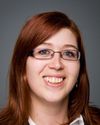It depends on what the symptoms are or what the deficits with the patients are. Someone with a mild injury may have memory problems. They may have visual field problems. They may have neglect. Some of our patients, depending on where the brain injury is, may forget about one side of their body, so the system forces will force them to do different things to remember that, yes, I do have a left arm and a left leg, or it will force them to try.
We're always trying to give people a way of overcoming their deficits. I can give you an example. We had a young man who had a fairly serious brain injury. He looked very normal. If you saw him walking you'd think he was quite normal, but he doesn't have short-term memory. It's very hard to live if you don't have short-term memory, so we use technology to help him. One of the things we do is program his BlackBerry or his iPhone and it will beep, and we train him that when it beeps to look at it, and it will say, “get up, get out of bed, brush your teeth, eat, get dressed”, or whatever is needed.
It's the same thing with this machine. For whatever is needed, our operator can write a program and insert things into it so that as you're walking and you meet someone.... What do you do when you meet someone? You stop, you say hello. There are things we can program to try to make it more normal for these patients.




